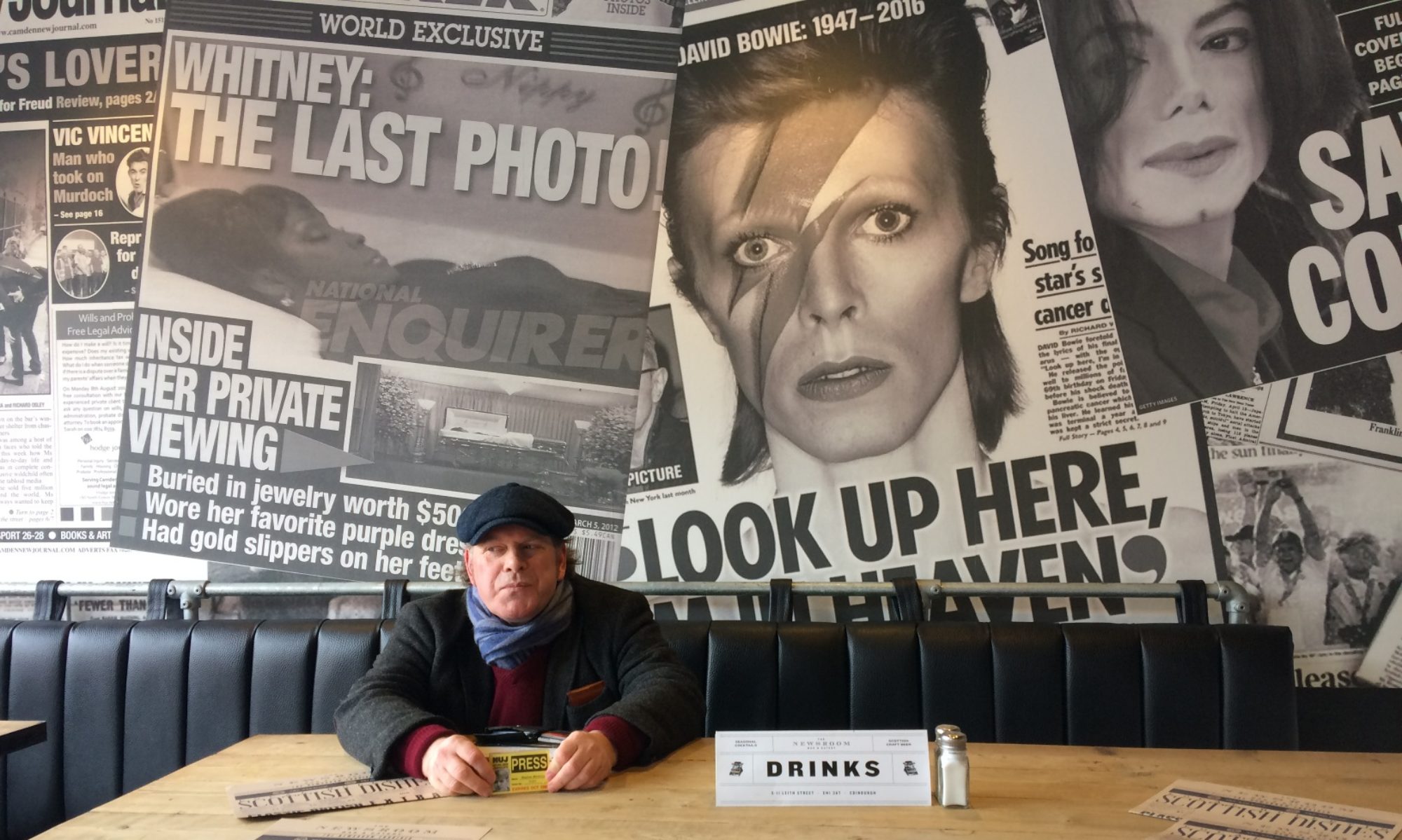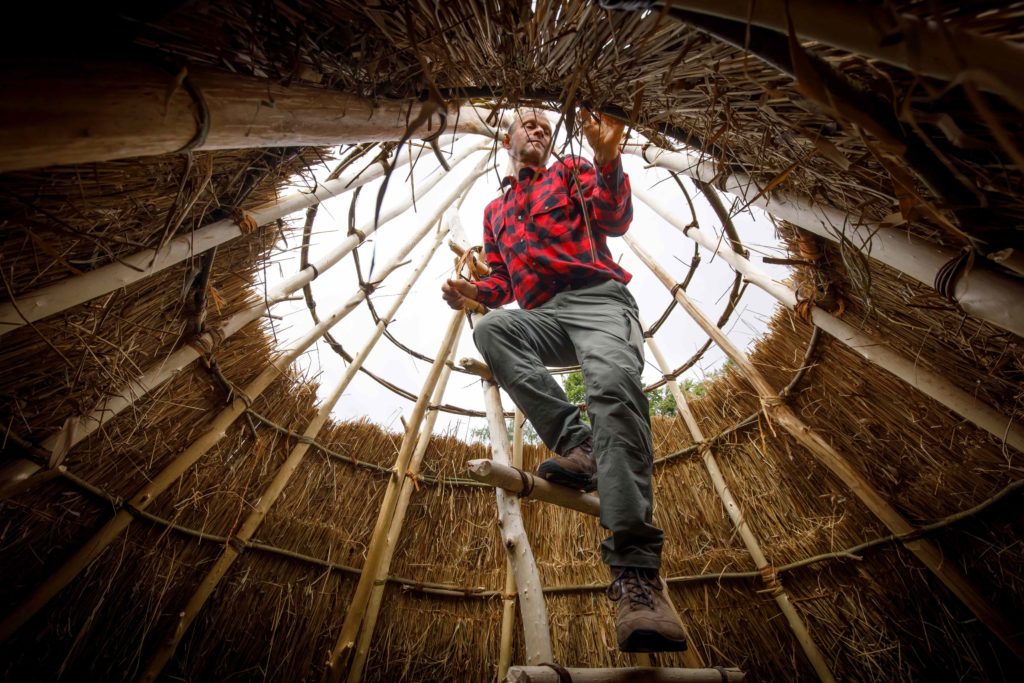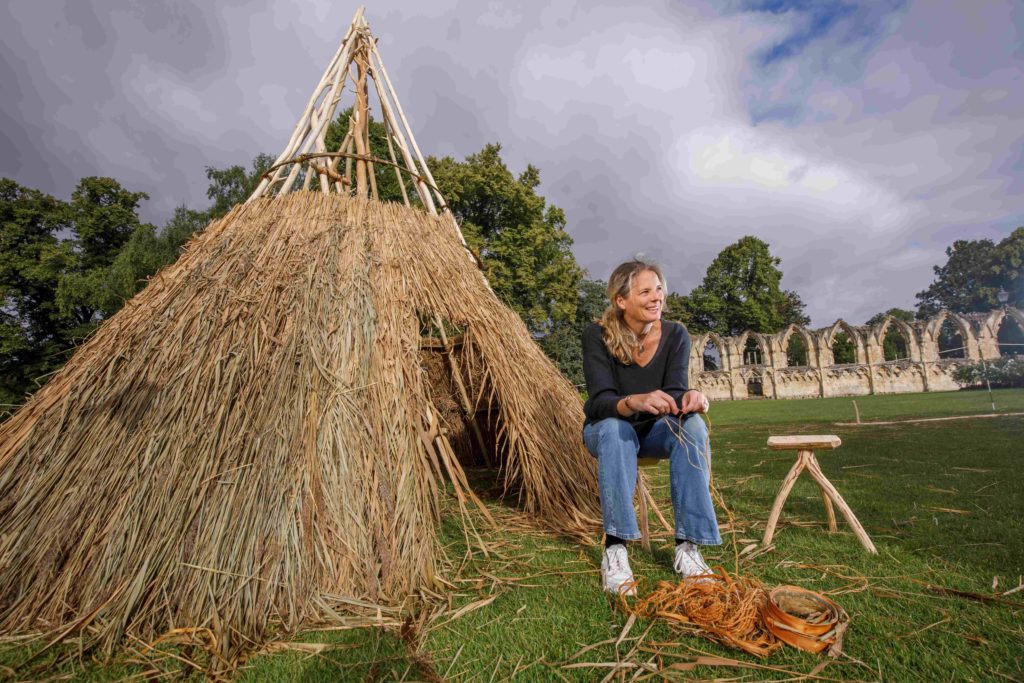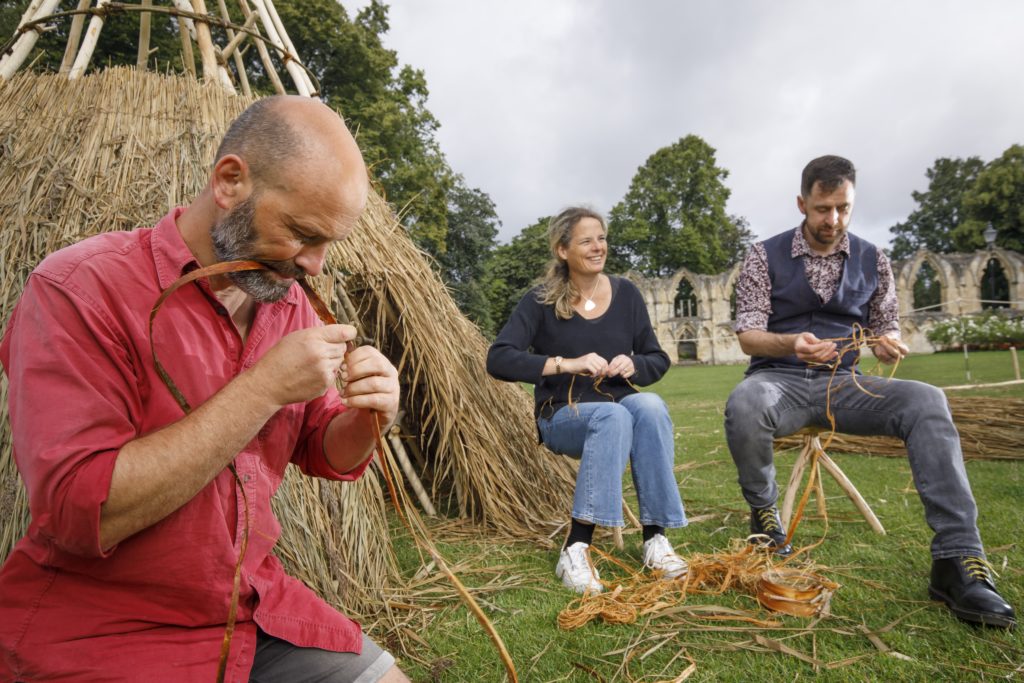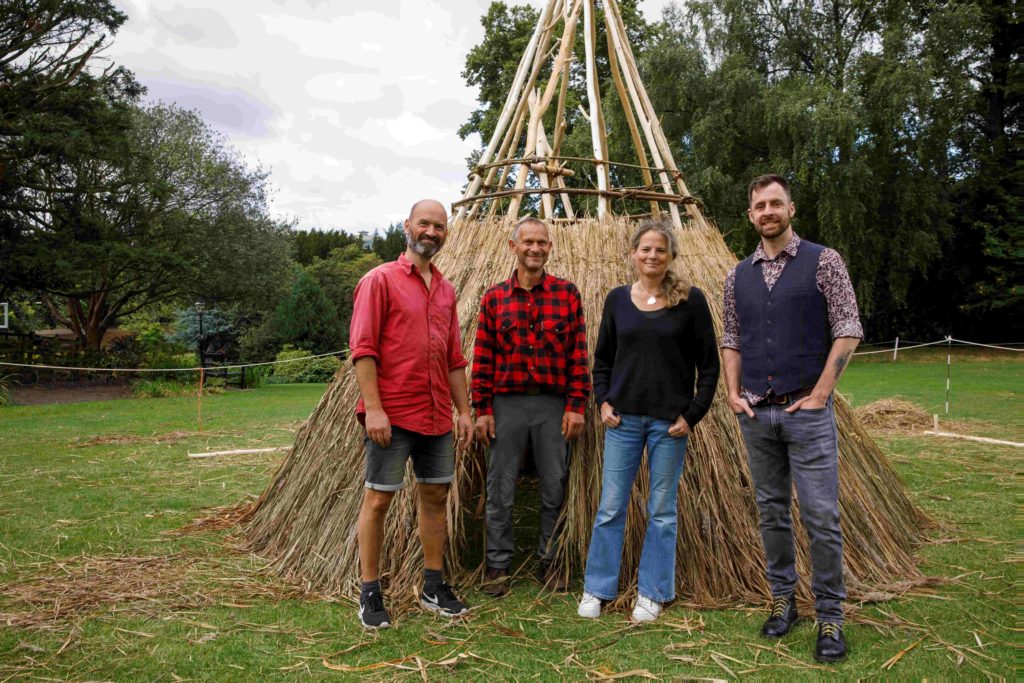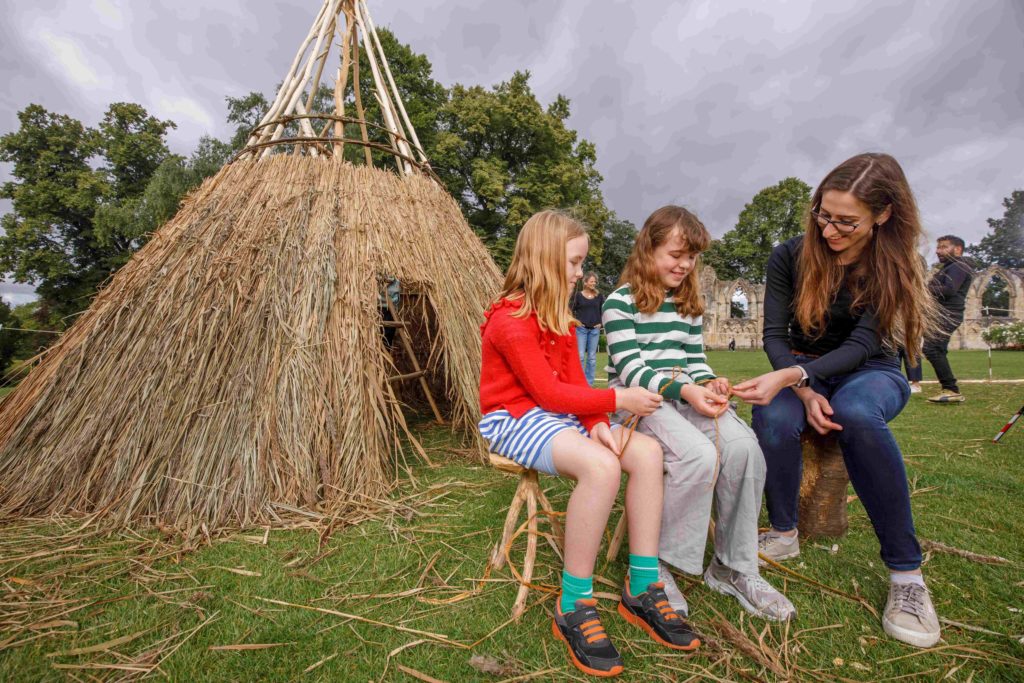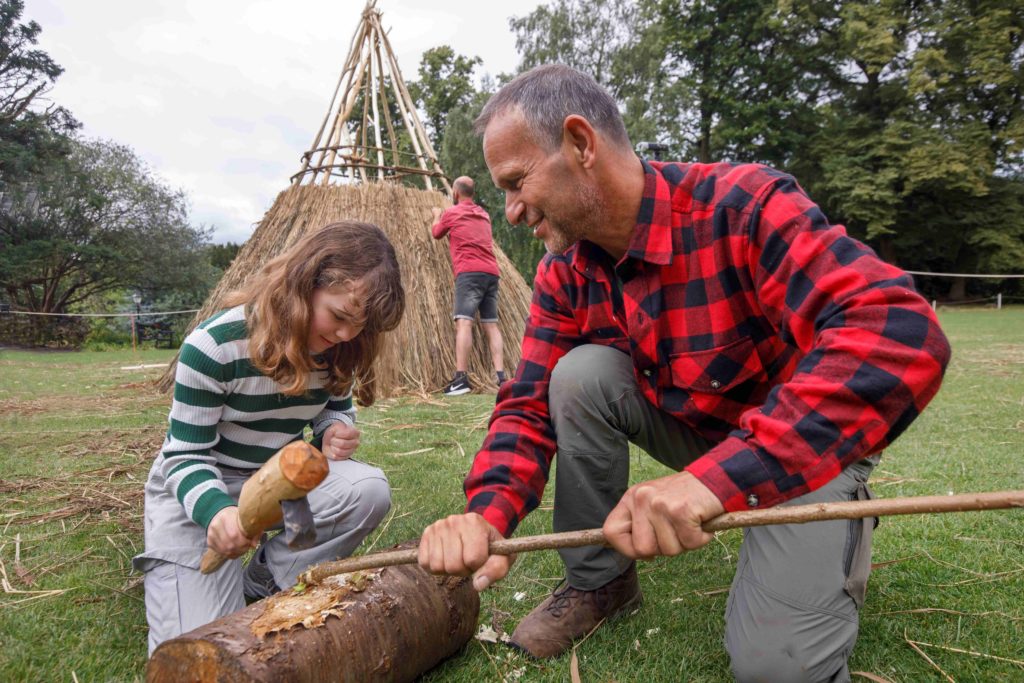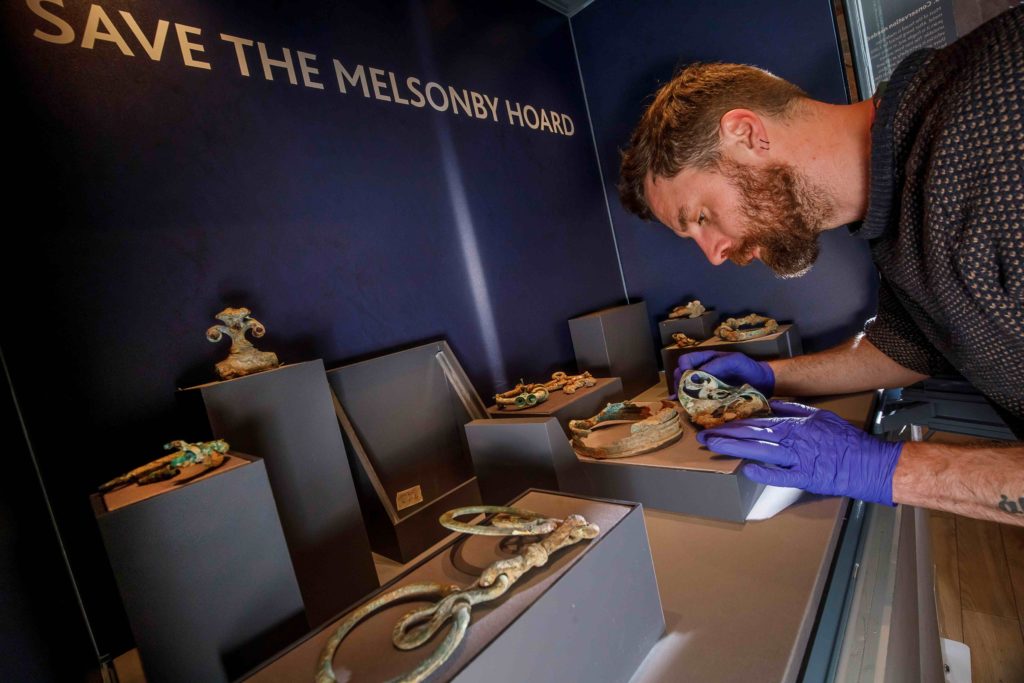
Dr Adam Parker, curator of Archaeology at York Museums Trust, handling an object in the Melsonby Hoard collection. Picture: Gareth Buddo for York Museums Trust
THE Yorkshire Museum, in York, has received £192,096 from the National Heritage Memorial Fund alongside public fundraising to acquire the Melsonby Hoard for future generations.
Discovered by a metal detectorist in 2021, near the village of Melsonby, North Yorkshire, the collection of more than 800 Iron Age artefacts dates back 2,000 years.
The hoard is a groundbreaking discovery for Iron Age research, featuring objects such as chariot wheels, cauldrons, horse bridles and ceremonial spears.
The quantity and variety of objects are unusual and have important implications for reassessing our understanding of Iron Age life in the north of England.
The hoard was excavated by a team of archaeologists from Durham University who stabilised and began researching this extraordinary find with financial support of more than £120,000 from Historic England and expert advice from the British Museum.
The find was reported under the Treasure Act 1996, administered by the Treasure Registry at the British Museum on behalf of the Department for Culture Media and Sport, and recorded with the Portable Antiquities Scheme.

Dr Andrew Woods, left, and Dr Adam Parker
Thanks to the collective hard work of these organisations, alongside support from the National Heritage Memorial Fund, £54,000 in donations from the public, via the online crowdfunder, and a further £20,000 in other donations, the purchase of the hoard has been secured for the Yorkshire Museum.
Here, further research, conservation and analytical work will be carried out to learn more about its contents and ensure its long-term preservation. It will also become an important part of the Yorkshire Museum’s public programme, sharing the discovery with the museum’s visitors.
The Yorkshire Museum will be continuing its fundraising work to support the next steps for the hoard: conservation, display and research. Conservation will be undertaken to stabilise objects and prepare them for display.
The museum will work in partnership to undertake detailed research into the objects, their context and their significance for understanding life in the Iron Age.
The National Heritage Memorial Fund exists as a fund of last resort to support the acquisition, preservation and maintenance of the UK’s most outstanding heritage to create a publicly accessible and timeless collection as a memorial for those who have given their lives for the UK.
Kathryn Blacker, chief executive of York Museums Trust, said: “The Melsonby Hoard is a significant piece of Yorkshire’s history and York Museums Trust is delighted to have secured the funding to acquire the hoard for the nation.

Objects from the Melsonby Hoard, secured for the Yorkshire Museum. Picture: Gareth Buddo for York Museums Trust
“Thanks to the incredible support of the National Heritage Memorial Fund, as well as generous donations from members of the public, the hoard will remain here in Yorkshire, to be made available for everyone to see and to enjoy.
“We remain committed to researching and conserving these unprecedented finds to improve our understanding of our shared past and securing them for future generations.”
Simon Thurley, chair of the National Heritage Memorial Fund, said: “The Melsonby Hoard throws bright new light on Iron Age life in Yorkshire and beyond. We are pleased to support this acquisition, which will keep the hoard intact, in the county in which it was buried and enable research to take place to gain a deeper insight into its origin and history.
“We are delighted to count the Melsonby Hoard as part of the growing and timeless collection of UK heritage that belongs to all of us forever.”
Dr Andrew Woods, head of research and collections at York Museums Trust, said: “The support from the public, other heritage organisations and the National Heritage Memorial Fund means the Melsonby Hoard remains in Yorkshire for the public.
“This is only the beginning of the story. Next the Yorkshire Museum will work in partnership to undertake a careful programme of conservation to reveal more of the hoard’s beauty and to keep it protected for future generations.

Handle with care: A close-up of an object from the Melsonby Hoard. Picture: Gareth Buddo for York Museums Trust
“There will also be a research project to understand the stories of creation and deposition. Over the coming years the hoard will be put on display, and we cannot wait to share it with our visitors.”
Deputy leader of City of York Council and executive member for economy and culture, Councillor Pete Kilbane, said: “The huge level of public interest in the Melsonby Hoard, and support for keeping it in York, shows just how much people value our city’s role in showcasing the heritage of Yorkshire and these islands that we call home. It’s a major addition to a fantastic collection in the heart of York.
“Thanks to all the organisations and public who have supported the project so far. It feels like we are writing the next chapter in understanding our shared history, and York is at the centre of that story.”
The Yorkshire Museum, Museum Gardens, Museum Street, York, is open Tuesday to Sunday, 10am to 5pm.
The Melsonby Hoard: the back story
IN 2021, a metal detectorist unearthed a vast array of Iron Age metalwork in Melsonby, North Yorkshire. More than 800 items were uncovered, including parts of vehicles such as chariots, weapons and cauldrons, as well as hundreds of individual items, in the largest hoard of Iron Age metalwork found in the UK.
The site is located next to the hillfort at Stanwick, the royal capital of Cartimandua, queen of the Brigantes tribe, and less than 50 miles from the Yorkshire Museum.
This hugely significant discovery is an archaeological time capsule from 2,000 years ago, buried in the first century around the time of the Roman conquest of southern Britain. The quantity and variety of objects found together are highly unusual for the Iron Age.
The hoard includes partial remains of more than seven wagons and chariots, elaborate harnesses for at least 14 horses, three ceremonial spears, two ornate cauldrons, and an iron mirror. Similarities to objects found in France and Denmark and coral imported from the Mediterranean reveal a community with international connections.
A large amount of the material within the hoard was either burnt or broken at the time of burial, suggesting a symbolic process of people showing their wealth and power by destroying the objects.
The fundraising campaign
THE Melsonby Hoard is a game-changing discovery, shedding new light on Iron Age Britain’s technological skill, artistry, trading links and society. Without urgent action, however, this treasure could have been lost to private collections or dispersed beyond the UK.
The value of the hoard was assessed at £254,000. Raising this amount was sufficient to save the hoard from private sale, keeping it in a public museum where it will be available for research and public display.
The objects are all 2,000 years old and require professional conservation to prevent deterioration of the fragile metalwork, enamel and coral. To protect the hoard into the future, additional funds for conservation are needed, so the fundraising continues.
